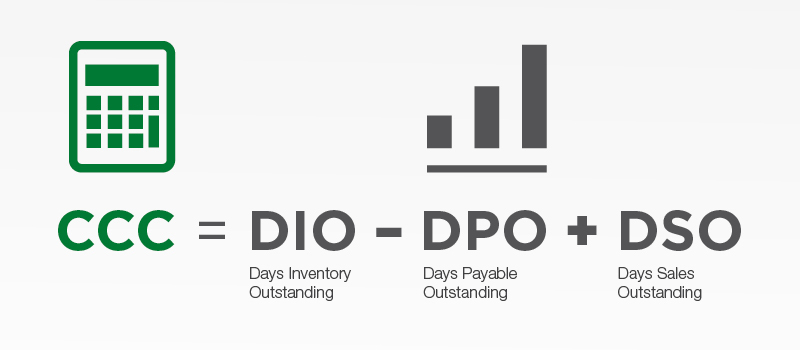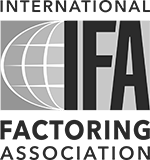7 proven cash flow tactics every CFO needs to know
Part 2 in the Cash Cycle series: Use these cash flow tactics to unlock the working capital you need to achieve your business goals.

If you’re running a business, your “cash conversion cycle” (or “cash cycle”) is a vital component of your financial analysis. It tells you how many days it takes for your company to turn your inventory purchases into cash. The shorter your CCC, the more flexible your working capital — and that is every business owner and CFO’s dream.
With more liquidity and a shorter CCC, you’ll be able to pay bills, make payroll, take advantage of supplier discounts, order new inventory and grow faster.
Want to learn more about smart cash flow strategies? Check out our Ultimate Cash Cycle Guide
But to shorten the cash cycle, you need to first find a way of adjusting these three key variables:

- DIO: Days Inventory Outstanding.
- The average # days you turn inventory into sales.
- DPO: Days Payable Outstanding
- The # of days it takes to pay your accounts payable.
- DSO: Days Sales Outstanding
- The # of days it will take to collect on sales after they’ve been made.
Want more details on CCC including DIO, DPO and DSO? Read part 1 now.
Once you’ve established your cash cycle, the next step is to implement positive changes to these three variables — ultimately, to shorten your CCC. Luckily, these cash flow tactics can help you achieve this:
1. Sell quicker with improved sales times

Selling faster is every company’s goal, but it’s often easier said than done. Taking the time to evaluate your sales process can be a good first step. Identify areas of your sales cycle that can be improved and then implement changes immediately. The goal here is to shorten your DIO and turn your inventory into cash quicker.
2. Build strong relationships with suppliers
You can also shorten your DIO by improving upon your current supply chain. You’ve likely worked hard to develop good relationships with suppliers, so now try to get more favorable terms and agreements to keep your inventory flowing. Idle time and idle inventory are a big expense.
Where possible, take advantage of just-in-time inventory practices, where your goods arrive only as needed. In the past, this was popular for industries such as manufacturing and perishables.
More recently, this has become common in retail and e-commerce, including a wide variety of industries, with a rise in dropshipping. In this inventory model, companies never handle their own inventory – instead, when your customer orders arrive you’ll purchase the inventory from a third party who ships directly to the end customer on your behalf.
3. Better credit and collection process
There’s no doubt that an effective collections department will improve your ability to collect customer invoices on time. Effective collections can help create a more stable and reliable DSO. However, this requires staff training, likely more personnel hours (translating into payroll costs) and leadership’s time to make sure this process is effectively managed.
4. Investigate extended payment term options

Extending your accounts payable will increase your DPO, and help offset the other two factors of your CCC. But this could negatively impact your relationships with suppliers if you extend too much, and breaching the terms could put you at risk of becoming the delinquent account you’re trying to avoid in your own A/R.
If you have nurtured a strong relationship with your suppliers, then you may be able to ask for extensions on your payment terms without negatively affecting your standing with suppliers.
5. Reduce your 30/60/90 day payment terms
Fortunately, you’re in control of your accounts receivable terms and can shorten them to receive payment earlier. By reducing your terms, you lower your DSO and speed up your cash cycle.
Unfortunately, many customers request and expect longer terms. Some industries abide by certain time frames to pay, which may not match up with your cash flow needs. And other customers will be delinquent on payment no matter what terms you agree upon. You may risk losing sales to competitors offering better terms.
6. Early pay discounts
These are generally not very effective at reducing your DSO and some customers take the discount even when they pay on normal schedules. Overall, this can lead to lower revenue than expected, which doesn’t amount to a cheap option.

7. Smart & strategic financing
Being strategic with your billing and collections is one of the most accessible cash flow tactics that you can use to improve your cash cycle, and you can use commercial finance solutions to dramatically shorten your DSO. In fact, instead of having a DSO of 30/60/90 or more days, you can have a DSO of one day.
Up Next:
Read Part 1: How to determine your company’s “cash conversion cycle”

Read Part 3: Learn how to leverage your assets to grow your working capital

Read Part 4: Learn how to keep suppliers happy and cash in your pocket

About Liquid Capital
At Liquid Capital, we understand what it takes for small, medium, and emerging mid-market businesses to succeed – because we’re business people ourselves. Our company is built on a network of locally owned and operated Principal Offices, so whenever you’re talking to Liquid Capital you’re talking directly to your funding source and a fellow business person.













